On March 1, 1984 the Italian Institute for Disarmament, Development and Peace (Istituto di ricerche per il disarmo, lo sviluppo e la pace in Rome published the entire Italian Army order of battle down to company level – this was justified by the radical party as one of its core demands was total disarmament of Europe, even though the data which was published was top secret. The Radical Party dissolved in 1989 and the IRDISP followed suit in 1990. But Radio Radicale has survived, and the OrBat can still be found today on the homepage of the radio.

The Cavalry Brigade "Pozzuolo del Friuli" is a brigade of the Italian Army, based in the Friuli-Venezia Giulia and Veneto regions. The Brigade consists of a command unit, a cavalry regiment, an amphibious infantry regiment, an artillery regiment, an engineer regiment and a logistic regiment.

The Airmobile Brigade "Friuli" is an airmobile brigade of the Italian Army, based mainly in the Emilia-Romagna region. The brigade was part of the 1st Defence Forces Command until it was transferred to the Division "Friuli". The brigade's coat of arms depicts a stylized version of the Rocca di Monfalcone castle near the city of Monfalcone in the Friuli region, where the brigade distinguished itself during World War I. Since 1 July 2019 the brigade is part of the Division "Vittorio Veneto".
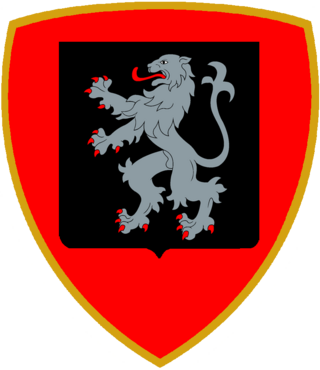
The Mechanized Brigade "Aosta" is a mechanized infantry brigade of the Italian Army based on the island of Sicily. The Brigade is one of the oldest of the Italian Army and the name connects the brigade to its original area of recruitment the Aosta Valley and therefore the brigade's coat of arms is modeled after the coat of arms of Aosta. The brigade is part of the Division "Acqui".

The 132nd Armored Brigade "Ariete" is currently the only active armored brigade of the Italian Army. Its core units are tank and Bersaglieri regiments. The brigade's headquarters is in Pordenone, and most of its units are based in the North-East of Italy. The brigade's name comes from the battering ram. The brigade draws much of its historical traditions from the 132nd Armored Division "Ariete," which fought in the Western Desert Campaign of World War II. In 1948, the Ariete was reconstituted as a division and remained active until 1986. Today the brigade is part of the Division "Vittorio Veneto".
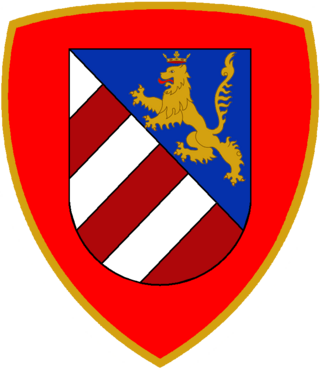
The Mechanized Brigade "Gorizia" was a mechanized brigade of the Italian Army. Its core units were mechanized infantry battalions. The brigade's headquarters was in the city of Gorizia and the brigade's units were based in the region of Friuli-Venezia Giulia. The brigade's name was chosen in memory of the World War I Battle of Gorizia. The brigade's sister brigade, the Armored Brigade "Vittorio Veneto", was named to commemorate the World War I Battle of Vittorio Veneto.

The Mechanized Brigade "Mantova" was a mechanized brigade of the Italian Army. Its core units were mechanized infantry battalions. The brigade's headquarters was in the city of Cividale del Friuli and all the brigade's units were based in the region of Friuli-Venezia Giulia. In 2003, the "Mantova" was raised again as a division command.

The Motorized Brigade "Cremona" was an infantry brigade of the Italian Army. The brigade's headquarters was in the city of Turin. The brigade carried on the name and traditions of the 44th Infantry Division "Cremona".

The Mechanized Brigade "Trieste" was a mechanized brigade of the Italian Army. Its core units were mechanized infantry battalions. The brigade's headquarter was in the city of Bologna. Named after the North-Eastern city of Trieste the brigade's coat of arms was modeled after the city's coat of arms.

The Mechanized Division "Folgore" was a mechanized division of the Italian Army. Its core units were three mechanized brigades. The brigades headquarters was in the city of Treviso.
The following is a hierarchical outline for the Italian Army at the end of the Cold War. It is intended to convey the connections and relationships between units and formations.

The Mechanized Brigade "Isonzo" was a short-lived brigade of the Italian Army created during the 1975 army reform and renamed Mechanized Brigade "Mantova" during the 1986 army reform. The name of the brigade was chosen to commemorate the twelve Battles of the Isonzo during World War I.
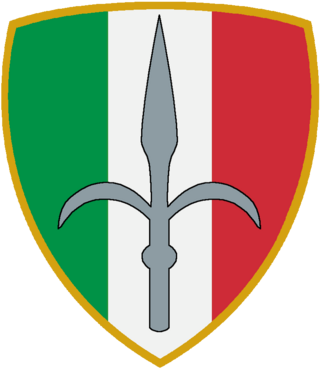
The Trieste Troops Command was an Italian Army brigade-sized command located in the city of the Trieste and tasked with the defense of the city in case of a Yugoslav-Italian war.
With the 1975 reforms the Italian Army abolished the regimental level and replaced it with brigades made up of multiple arms. During the reform the army disbanded 48 regimental commands and reduced its force by 87 battalions. A further ten regimental commands were used to raise ten new brigade commands. Ten training centers, which for traditional reasons had carried the names of regiments, were also disbanded. The reduction in units also allowed to mechanize most of the remaining units in Northern Italy and Italy's defense strategy changed from a hold-at-all-costs territorial defense to one of mobile warfare.
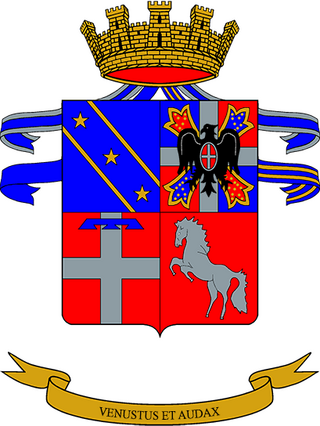
The Regiment "Piemonte Cavalleria" (2nd) is a cavalry regiment of the Italian Army based in Villa Opicina in Friuli-Venezia Giulia.The regiment is the reconnaissance unit of the Alpine Brigade "Julia".

The Regiment "Lancieri di Aosta" (6th) is a cavalry unit of the Italian Army based in Palermo in Sicily. The regiment is the reconnaissance unit of the Mechanized Brigade "Aosta". The regiment was formed in 1774 as present to the King of Sardinia's fifteen-year-old son Victor Emmanuel, Duke of Aosta. The regiment fought in the War of the First Coalition against French forces, until 1796 when Napoleon Bonaparte defeated the Royal Sardinian Army in the Montenotte campaign. In October of the same year the regiment was disbanded.
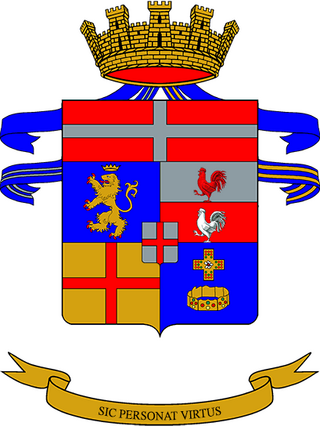
The Regiment "Lancieri di Milano" (7th) is an inactive cavalry unit of the Italian Army. The regiment was formed after the Second Italian War of Independence and participated in the Third Italian War of Independence. In World War I the regiment fought dismounted on the Italian front. After the war the regiment was disbanded. Shortly before World War II the regiment was reformed. The regiment participated in the Italian invasion of Greece and remained afterwards on anti-partisan duty in Albania, Croatia and occupied Greece. The regiment dissolved in Larissa in Greece after the announcement of the Armistice of Cassibile. During the Cold War the unit served as the reconnaissance group of the Infantry Division "Legnano" and after 1975 of the Mechanized Division "Mantova". In 1986 the group became the reconnaissance group of the Armored Brigade "Pozzuolo del Friuli". At the end of the Cold War the unit was disbanded in 1989.

The Regiment "Lancieri di Firenze" (9th) is an inactive cavalry unit of the Tuscan Army, French Army, Sardinian Army, and Italian Army. Formed in Tuscany in 1753 the regiment served in the Napoleonic Wars, during which its troops reached Madrid and Moscow. In 1848—49 the regiment fought in the First Italian War of Independence. During the Second Italian War of Independence the regiment switched allegiance from the Grand Duchy of Tuscany to the Kingdom of Sardinia and thus became the only regiment from a pre-unification state to be integrated into the Royal Sardinian Army. The regiment participated in the Third Italian War of Independence and during World War I it fought dismounted in the trenches of the Italian front. In World War II the regiment was assigned to the 2nd Cavalry Division "Emanuele Filiberto Testa di Ferro" and served in annexed Albania, occupied Greece, and occupied Yugoslavia on anti-partisan duty. The regiment was disbanded after the announcement of the Armistice of Cassibile by invading German forces. During the Cold War the unit was assigned to the Armored Brigade "Vittorio Veneto" as a tank unit. After the Cold War the regiment was disbanded in 1995.

The 114th Infantry Regiment "Mantova" is an inactive unit of the Italian Army last based in Tricesimo. The regiment is named for the city of Mantova and part of the Italian Army's infantry arm.

The Logistic Battalion "Vittorio Veneto" is an inactive logistics unit of the Italian Army, which was assigned to the Mechanized Brigade "Vittorio Veneto". The regimental anniversary falls, as for all units of the Transport and Materiel Corps, on 22 May, the anniversary of the Italian Army's first major automobile use to transport reinforcements to counter the Austro-Hungarian Offensive at Asiago in 1916.


















